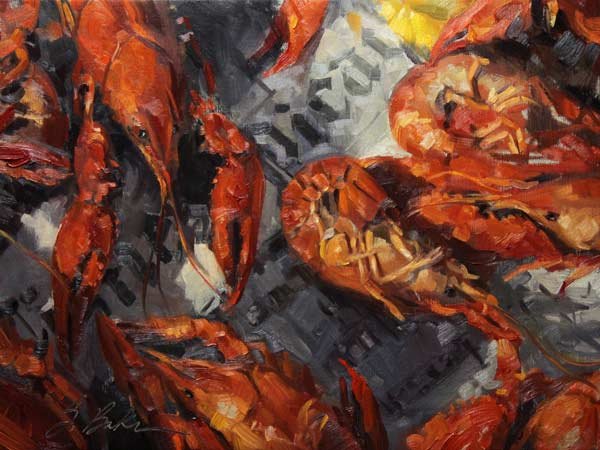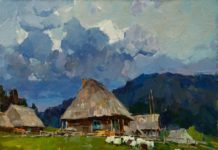Suzie Baker has a very simple explanation for why her painting “News Worthy” — the top prize winner in the April-May contest of the PleinAir Salon — was not painted en plein air.
“Typically, I do paint from life — but I like crawfish,” she says. “They wouldn’t survive a painting. I ate them.”
Baker says this is the third time she has painted this subject matter. The other two paintings of the theme were 6″ x 6″ and 18″ x 40″. (Baker clearly feels comfortable moving among size formats; “I just use a bigger brush for bigger pieces,” she says.) The pieces could be thought of as love letters to New Orleans. “For anybody who has any connection with New Orleans, the Times-Picayune newspaper just resonates with them,” says the Texas artist. “And a crawfish boil, where you dump out a bunch of crawfish on newspaper-covered tables, is something that connotes fun, family, outside, togetherness, and community.”
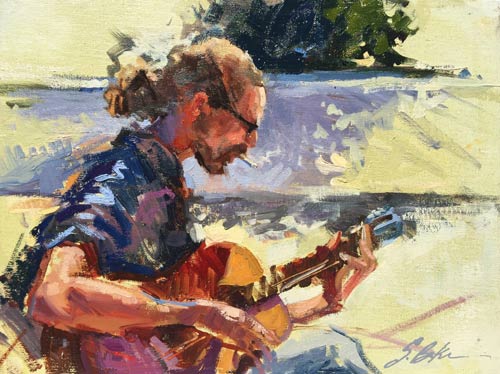
“Music for Jane,” by Suzie Baker, 2015, oil on linen board, 9 x 12 in. Collection the artist
She photographed the crawfish outside, dumping them out randomly on the paper, and then adjusting their positions slightly so the banner for the Times-Picayune would show and the shadows cast by the crawfish would create a good composition. “I wanted the eye to circle around amid the busyness of the crawfish,” Baker says.
Whether she is working indoors or out, the artist tones her canvas in a color complementary to the dominant color in the subject matter. For green landscapes, for example, she will use a burnt sienna or a transparent red oxide as the undertone, taking care to keep that red faint in the sky area. “It gives a nice vibration of an undertone, but if it is too thick of a tone of red in the sky, it might be overpowering,” she says. “I don’t want to undo what I’m going to do.” She mostly uses filberts and flats, with a palette knife coming out for accents or for straight lines.
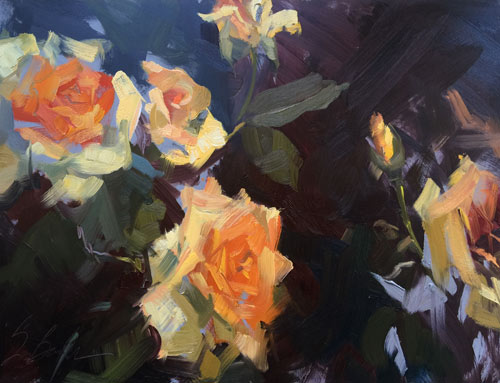
“Washington Oaks Roses,” by Suzie Baker, 2015, oil on gray panel, 9 x 12 in. Collection the artist
Baker utilizes notans, drawings, and color studies — and full-blown plein air pieces — in her process. A plein air piece can end up as a finished piece or reference for a studio painting. Plein air work can mean landscapes or figures, still lifes or studies. In the studio, she prepares thoroughly before touching the canvas, seeking to work quickly and fluidly with all the problems solved, the table set for her to express her vision with painterly strokes.
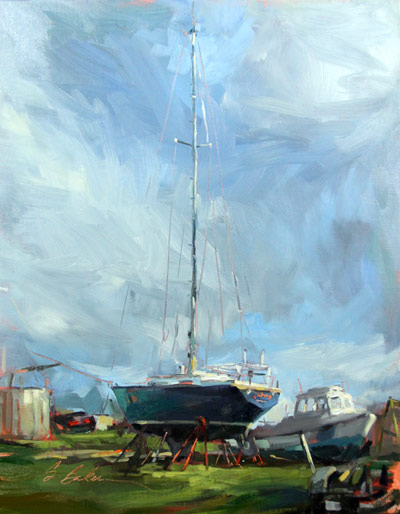
“Out to Pasture,” by Suzie Baker, 2014, oil on linen, 18 x 14 in. Courtesy Tartaglia Fine Art, Ojai, California
Baker teaches and travels to plein air events. She takes portrait commissions and raises her children. Her paintings suggest thoughtfulness and order, but she clearly values the spontaneous and free. She seems to have internalized the fundamentals while resisting unnecessary rules or categories. “What do I prefer to paint? Whatever is in front of me,” she says. “What inspires me is the paint and the handling of light, and how you can get it to work. Each discipline and each genre has its own set of challenges. I regularly paint en plein air and I love it, but in Texas the weather cooperates only some of the time.”
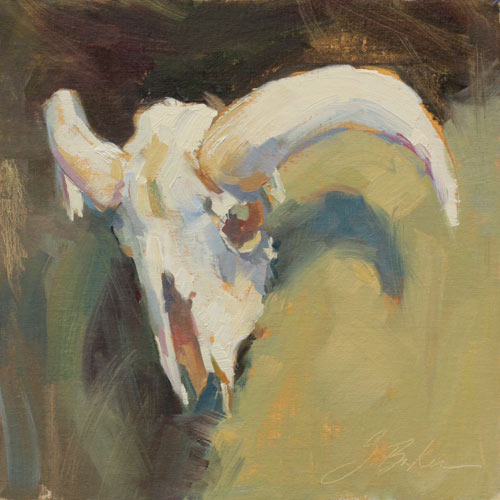
“Sentinel,” by Suzie Baker, 2014, oil on linen panel, 10 x 10 in.
One of Baker’s main goals is related to plein air. She says she appreciates the freshness of plein air pieces. “Studio pieces can get overworked and overthought,” she says. The artist took a workshop offered by Jill Carver that centered on “source to studio,” using plein air work as a springboard for studio pieces. “I can, theoretically, work more quickly in the studio when I’ve done work in the field,” says Baker. “I still have a couple of kids at home, so I don’t have full days of uninterrupted studio time. If I can get better at taking the plein air thing and making finished studio pieces from them, with the same kind of immediacy, it would be a big help.”

